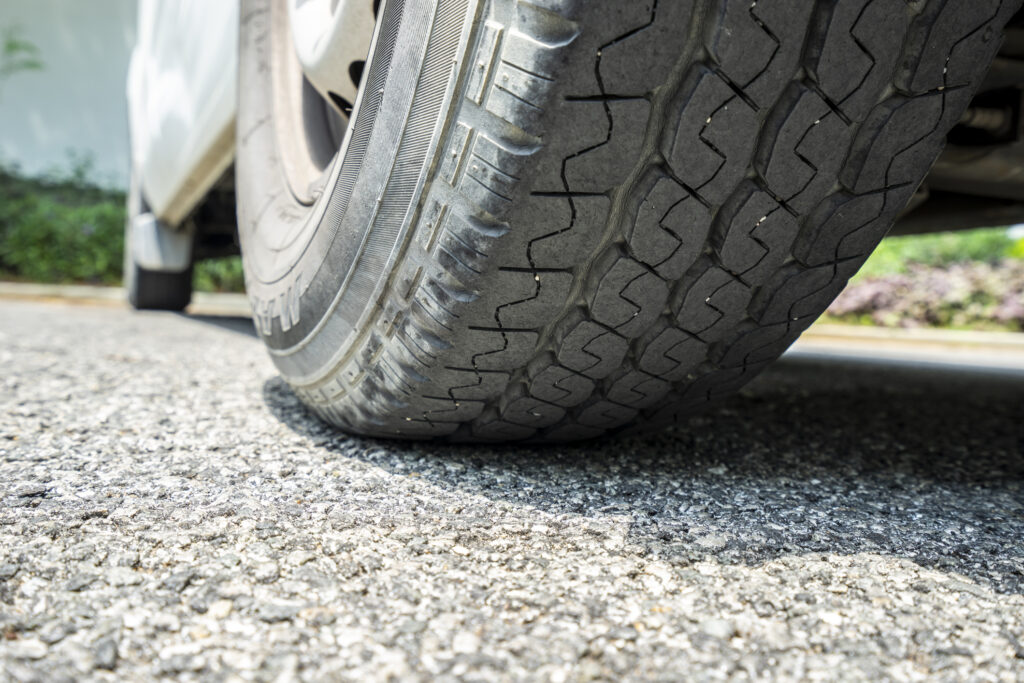Oregon counties need more than $800 million annually for roads and bridges, according to a new study from the Association of Oregon Counties. (Getty Images)
Oregon’s 36 counties will need more than $800 million per year to maintain roads and bridges, according to a new study from the Association of Oregon Counties.
The study, presented to the Legislature’s Joint Transportation Committee, comes as lawmakers start to craft a multibillion-dollar transportation package over the coming months. The Oregon Department of Transportation this summer said it needed an extra $1.8 billion annually just to keep up with maintenance – let alone pay for high-ticket projects like a replacement bridge on Interstate 5 connecting Oregon and Washington.
Sen. Chris Gorsek, D-Troutdale and a co-chair of the joint committee, summed the main problem up simply in a meeting last week.
“Our transportation system is old,” he said.
The interstate highway system built in the 1950s and 1960s has essentially lived out its useful life, Gorsek added, and Oregon hasn’t kept up with maintaining and replacing roads, bridges and machinery, like snow plows and graders.
Lawmakers have seens the struggling road system firsthand on a 12-stop transportation tour this summer. Sen. Lynn Findley, R-Vale, said the tour made clear that local governments were struggling to keep up.
“The cities and the counties have made significant adjustments, and they figure they’re just about adjusted out,” he said.
Counties are responsible for the largest share of the state’s road system – nearly 27,000 miles of roads and more than 3,400 bridges, about half of the total bridges in the state. The federal government is next, with more than 25,000 miles, followed by cities with more than 11,000 miles of roads and the state at nearly 8,000.
Most of the county bridges were built in the 1950s and 1960s, and more than 1,000 of them are so degraded that heavy trucks can’t drive on them. That’s a particularly acute problem in agricultural areas, where farmers have to take different routes to transport crops, and in forests, where trucks are used to respond to wildfires.
Deferred maintenance on roads and bridges results in more expensive replacement projects down the line. ODOT officials estimate that each $1 spent on preventive maintenance and minor repairs, like chip seal surface treatments, is equivalent to between $8 and $12 spent reconstructing a dilapidated road.
“Many county roads that were built over a half-century ago have failed down to poor condition and weren’t originally built to modern standards,” said Brian Worley, the Association of Oregon Counties’ county road program director.
Oregon counties are left with about $834 million in annual needs for roads and bridges, and the association’s report warned that anticipated revenue won’t meet even the most basic maintenance needs.
The state highway fund, the main source of money for state and local roads, isn’t keeping up with increased costs. Revenue from the state’s 40-cents-per-gallon gas tax is faltering as more Oregonians drive fuel-efficient cars or electric vehicles: The average driver now uses almost a quarter less fuel than they did a decade ago, paying about $40 less per year in gas taxes.
Fees paid to the Driver and Motor Vehicle Services division don’t always cover the cost to administer services, let alone bring in additional revenue. And weight-mile taxes charged to commercial truckers are uncertain – truckers are now suing the state alleging they’re being overcharged.
Under current law, the state keeps 50% of the highway fund, 30% goes to counties and 20% goes to cities.
Counties also receive road funding from the federal government. For more than a century, the U.S. Forest Service has paid local governments a share of logging proceeds from national forests in the counties to maintain roads and schools, but those payments plummeted as logging slowed in the 1990s.
Congress responded by passing the Secure Rural Schools and Community Self-Determination Act of 2000, which was meant to compensate counties for lost timber revenue. But without congressional action, that share of road funding is expected to continue to decrease.
Large counties have other funding sources. Multnomah and Washington counties both have countywide gas taxes – 3 cents in Multnomah and 1 cent in Washington – and Clackamas, Multnomah and Washington counties charge county vehicle registration fees.
GET THE MORNING HEADLINES.

